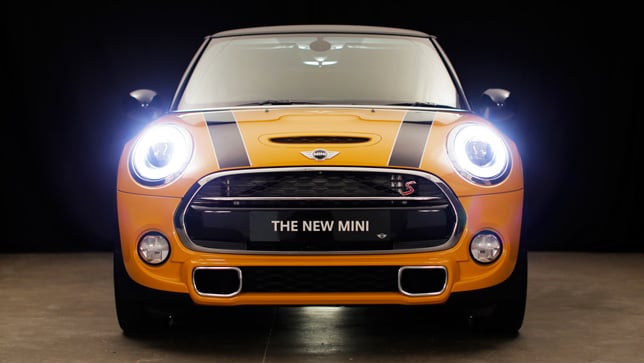EcoLogicStudio transforms cladding system into a bioreactor with Urban Algae Canopy
Dezeen and MINI Frontiers: in this movie Marco Poletto of EcoLogicStudio claims the integrated algae farm and cladding system his practice will showcase at the 2015 Milan Expo could be used to power cities in future.
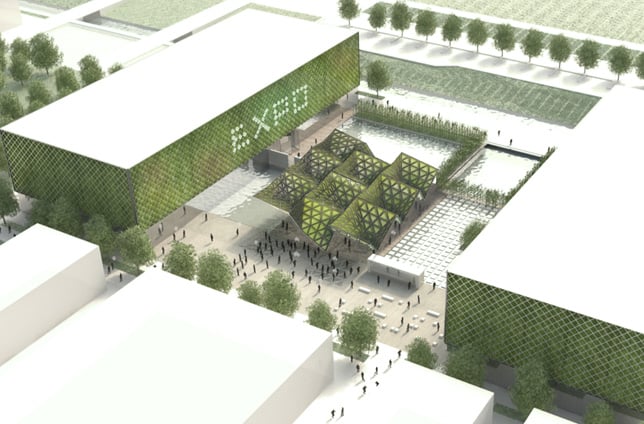
London architecture practice EcoLogicStudio's Urban Algae Canopy, which will be unveiled today at the 2015 Milan Expo, is a pavilion made from an ETFE (Ethylene Tetrafluoroethylene) skin that has been adapted to grow algae inside it.
"It takes an existing architectural technology and readapts it to host microalgal cultures," Poletto explains in the movie, which was filmed earlier this year at EcoLogicStudio's London office. "It becomes a living, bio-digital shelter."
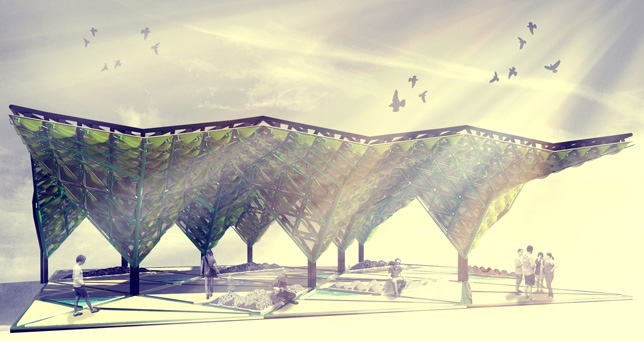
The system works by pumping oxygen and a solution of water, algae and nutrients through the ETFE cushions. The rate of the algae's growth inside the system will vary with the strength of the sun, Poletto claims.
"The sunnier it is the faster the algae will grow," he says. "They will become darker green and the pavilion will become less translucent, increasing the shading potential. So you can imagine this as an architecture that co-evolves with the season and with the environment."
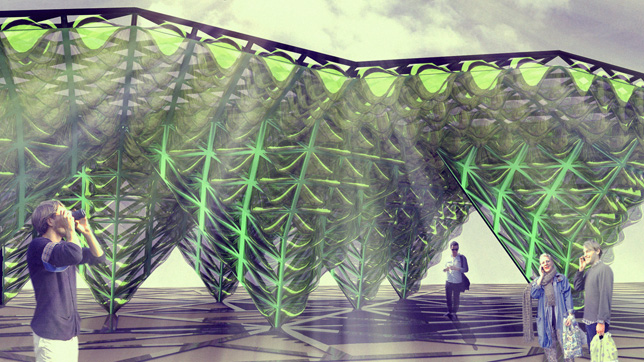
The Urban Algae Canopy will be part of the Future Food District curated by Carlo Ratti Associati. As well as providing shade, the algae will be regularly harvested to be eaten.

The pavilion will host a species of algae called spirulina, which is commonly used as a dietary supplement because it is so nutrient-rich. But Poletto says the algae could also be used as a bio-fuel.
Dezeen Book of Interviews: our new book, featuring conversations with 45 leading figures in architecture and design, is on sale now
"The pavilion will function essentially as a photosynthetic machine," he says. "Microalgae grow, you harvest it and you have this biomass which can either be a source of food or a source of energy."

The Urban Algae canopy at the 2015 Milan Expo will cover an area of approximately 36-square-metres, but Poletto believes the system can be used at a much larger scale. He envisages a future where whole buildings are clad with a bio-digital skin, which would simultaneously remove carbon dioxide from the atmosphere and provide food and energy for the building's inhabitants.
"The by-products of this process can plug directly into what we can call the expanded metabolism of the building, transforming it into a kind of power plant in itself," he says. "It could provide the density and intensity of production that will be necessary to feed cities already now, but even more so in future years."
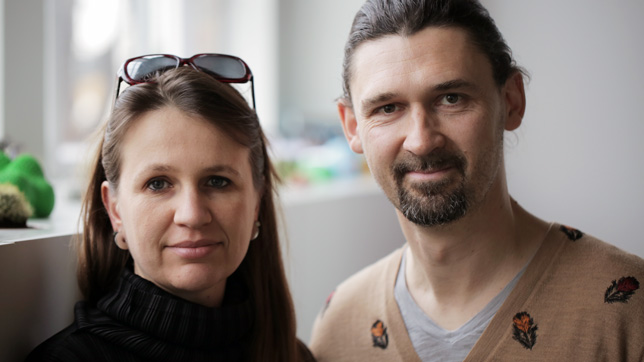
The music in the movie is a track called Trash Digital by UK producer 800xL.
Dezeen and MINI Frontiers is an ongoing collaboration with MINI exploring how design and technology are coming together to shape the future.
